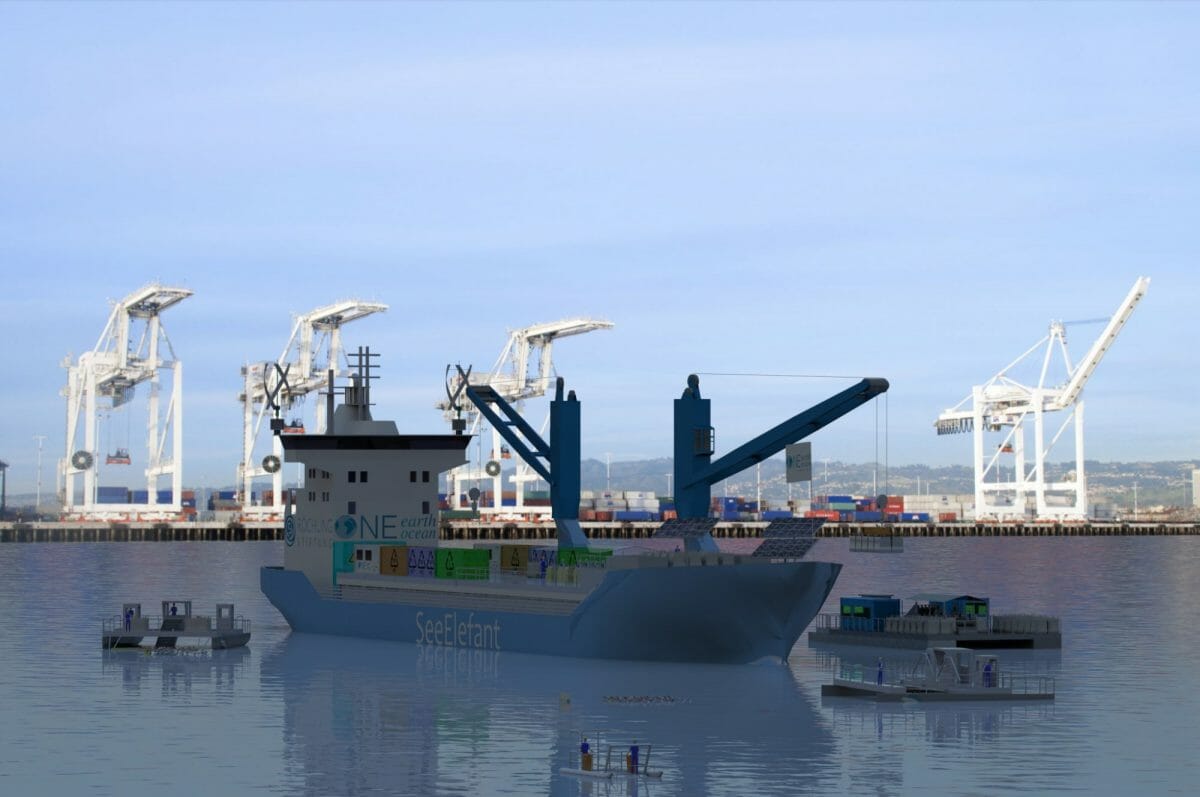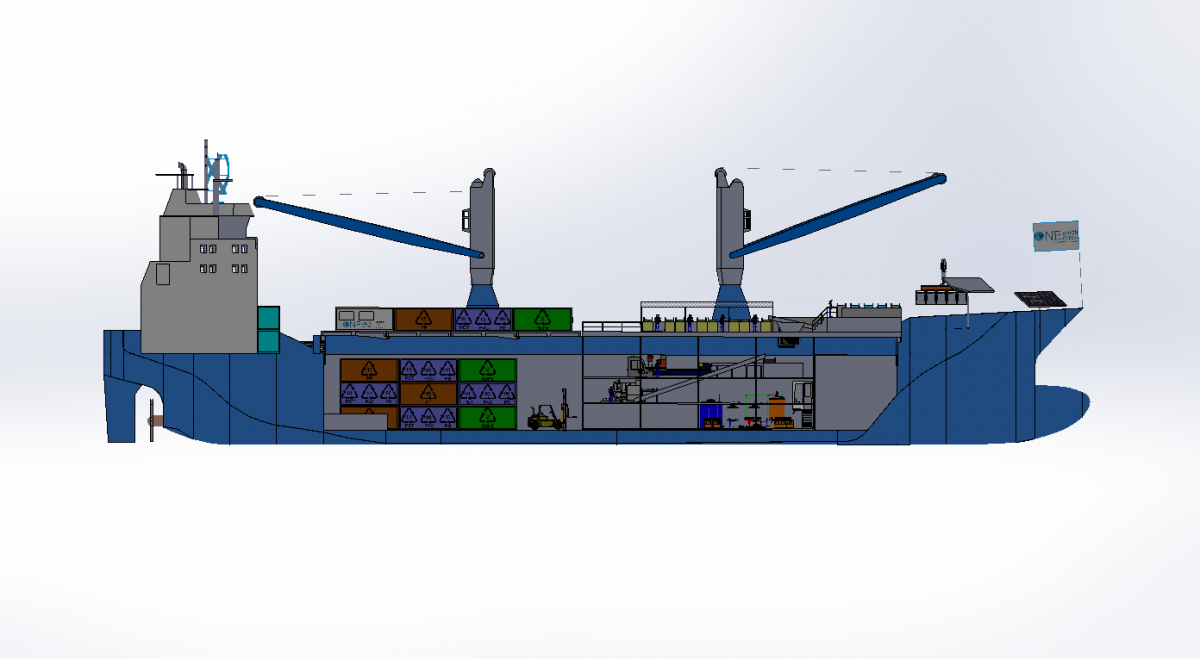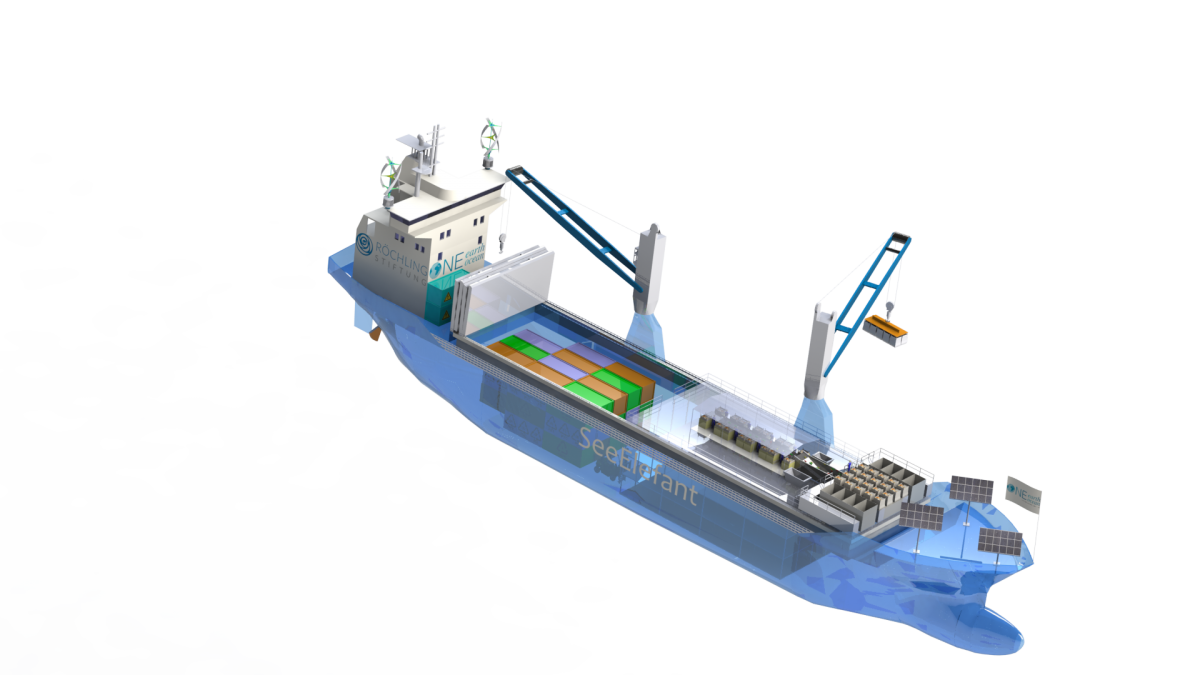
A Maritime Garbage Disposal
For ten months, a team of experts consisting of ship designers, plant engineers, environmental engineers and project developers worked on the concept of the elimination of coastal marine pollution by plastic waste. They also examined the technical, economic and legal feasibility. The Röchling Foundation financed this project which then cumulated in the final concept of a Maritime Waste Collection as a real and promising solution.
“The topic of plastic waste in the oceans is omnipresent. However, there is still a lack of viable concepts that can be implemented to quickly combat plastic waste in the sea. Utopias don’t help us,” explains Günther Bonin, founder of One Earth – One Ocean. “Our concept is a well thought and pragmatic approach, already been partially tested and continuously optimized. Now, we want to take the next big step”.
The concept of maritime waste collection envisions a fleet of special workboats with materials-handling equipment for collecting plastic waste from the sea. The first of these so-called SeeKuh has been in service since 2017 and was financially supported by the Röchling Foundation.
The idea sounds easy: The fleet of these ships take the collected plastic waste to the SeeElefant – a converted multi-purpose freighter that will have on-board facilities for sorting, crushing, processing and pressing marine waste. The plastic will be pressed into single-variety plastic bales and later be recycled. All of this on board of the freighter. In a few years’ time, with the availability of depolymerization plants suitable for industrial use, plastic will then be oiled directly on board.
“For us, the primary economic objective is to fully cover the costs of the pilot”, says project manager Dr. Harald Frank. The comprehensive business plan of the feasibility study shows the development of all parameters over a ten-year period. The investment costs for the pilot system can be limited to around 11.2 million euros by using a used, multi-purpose freighter on the one hand, and market-proven machine systems from recycling technology and the proven technology of the garbage collection catamarans on the other.
Now that verifiable and neutral figures and facts are on the table, the association begins its targeted search for investors and partners from industry and science in order to quickly implement its ambitious plan. OEOO’s cleaning concept concentrates primarily on hotspots such as river estuaries and coastal areas, where the concentrations of pollution are highest and where plastic waste is still relatively undivided as well as floating on the surface. Accessibility, logistics and energy consumption of waste collection can be controlled here.
An animation of the maritime garbage collection and the SeeElefant of OEOO can be found at www.youtube.com/watch?v=1KbxZDiMZw4.




